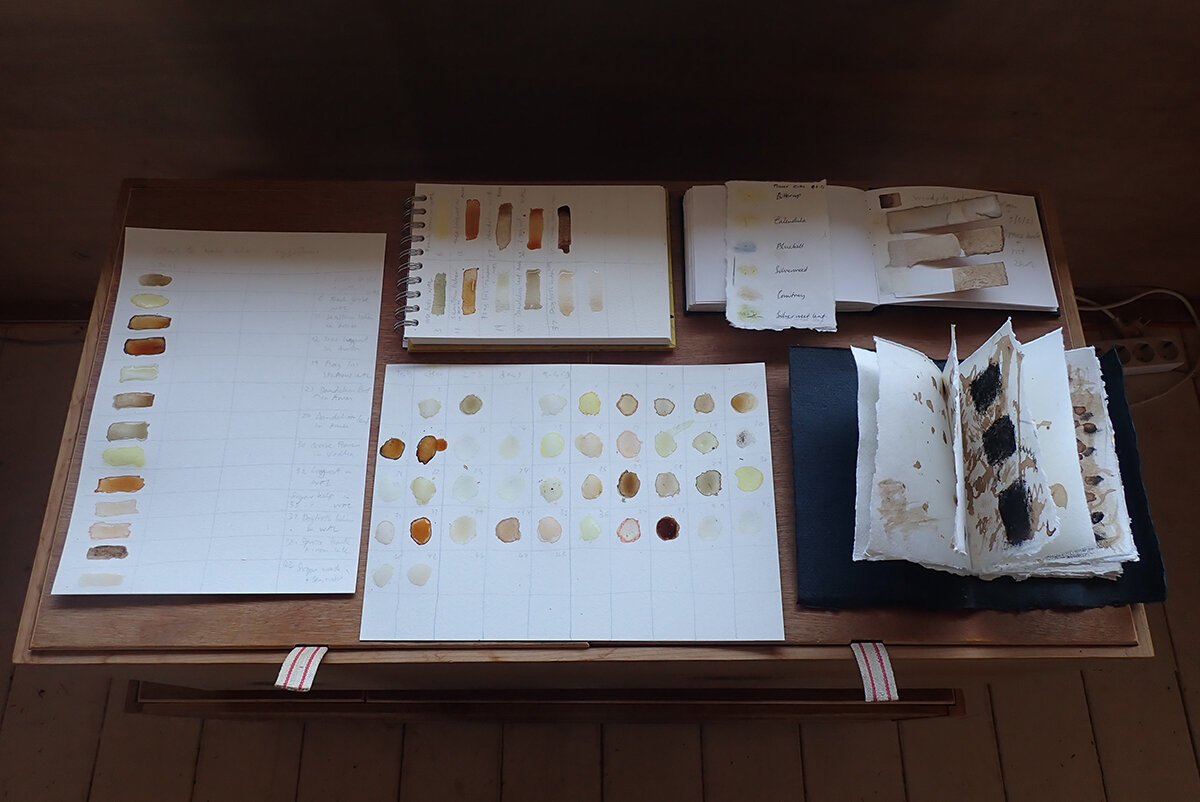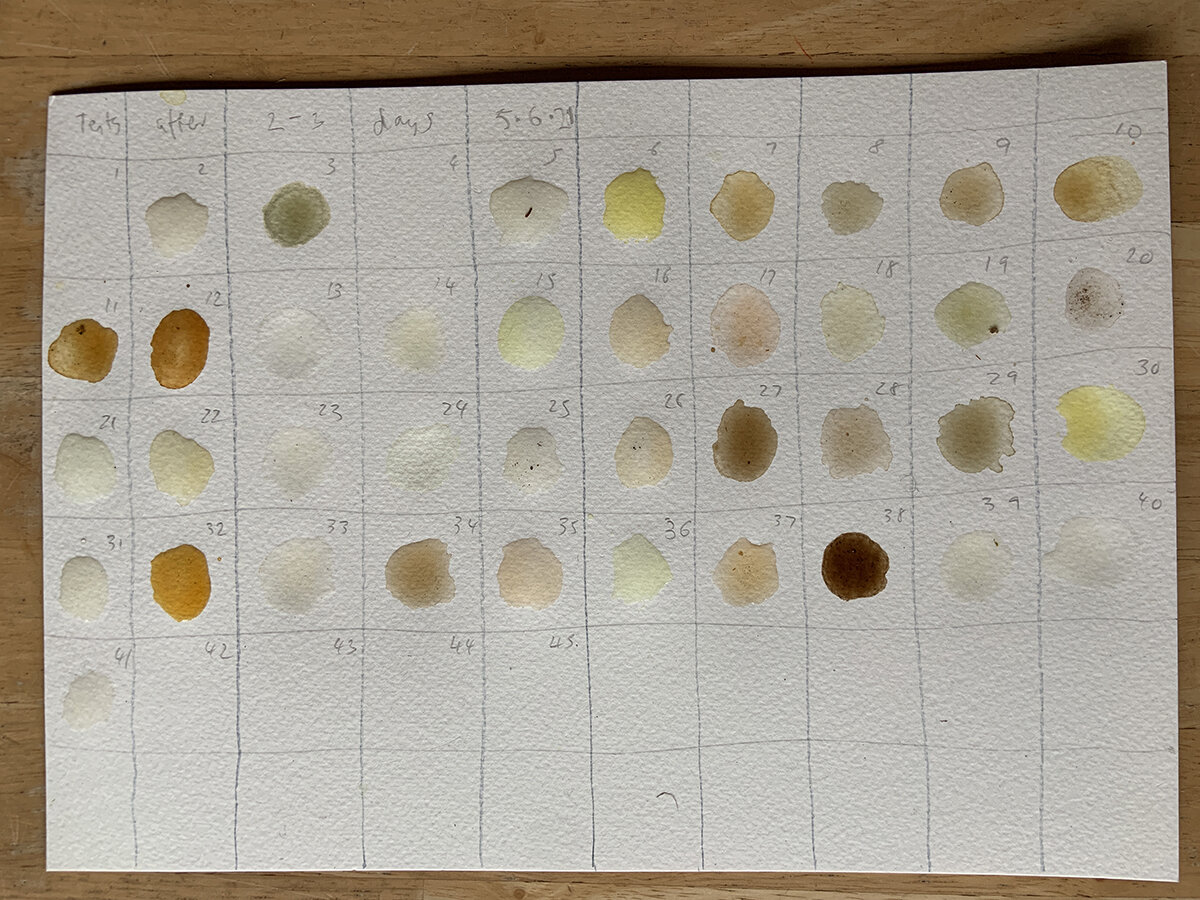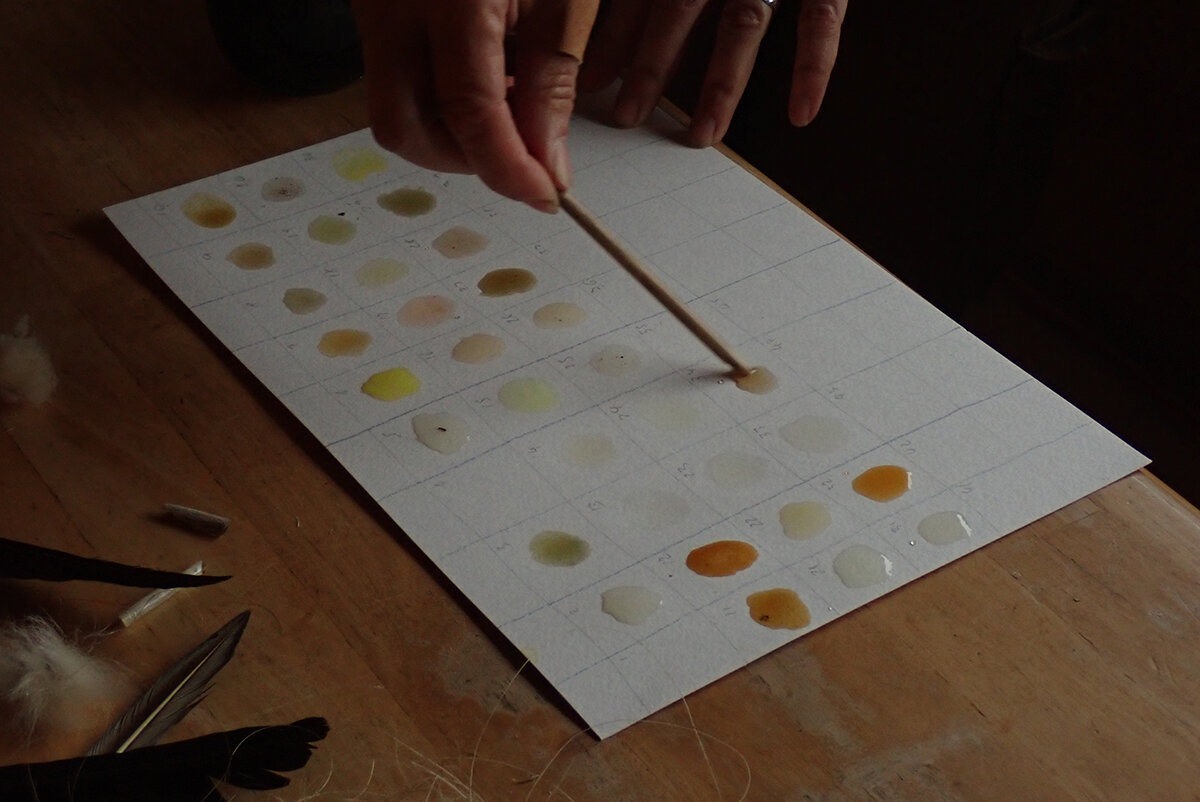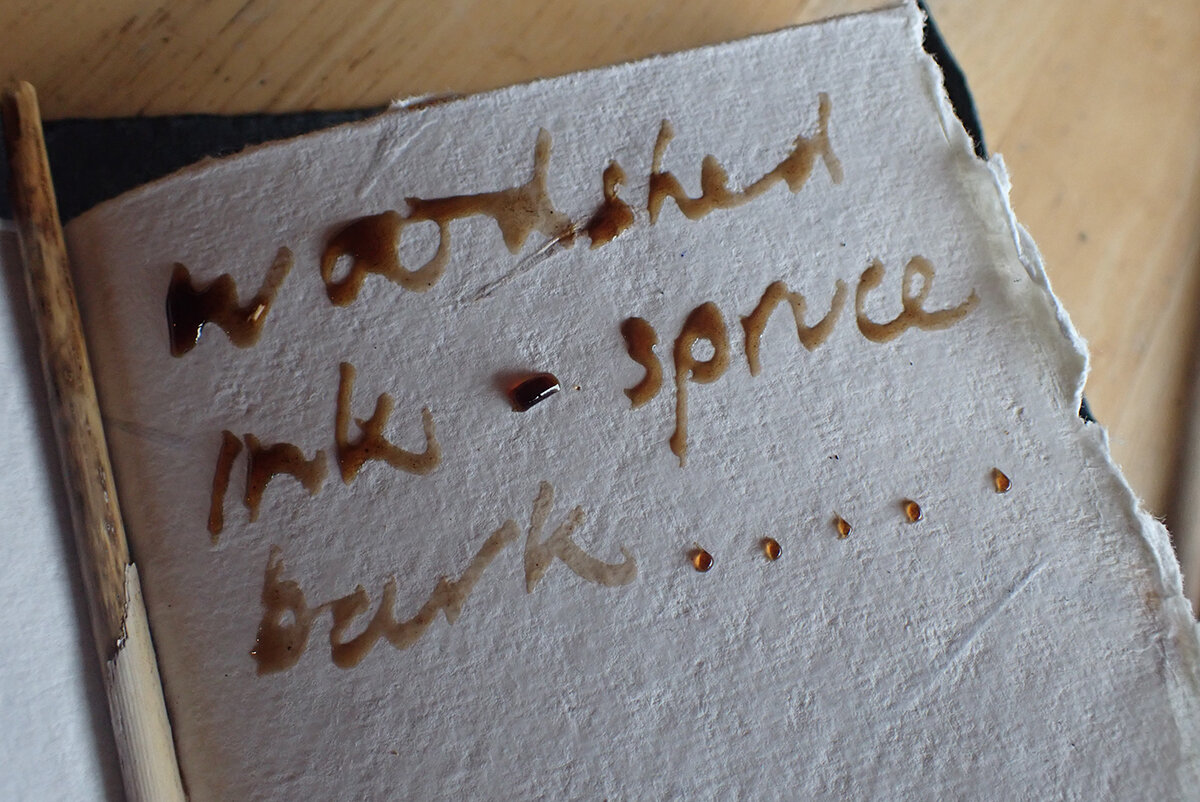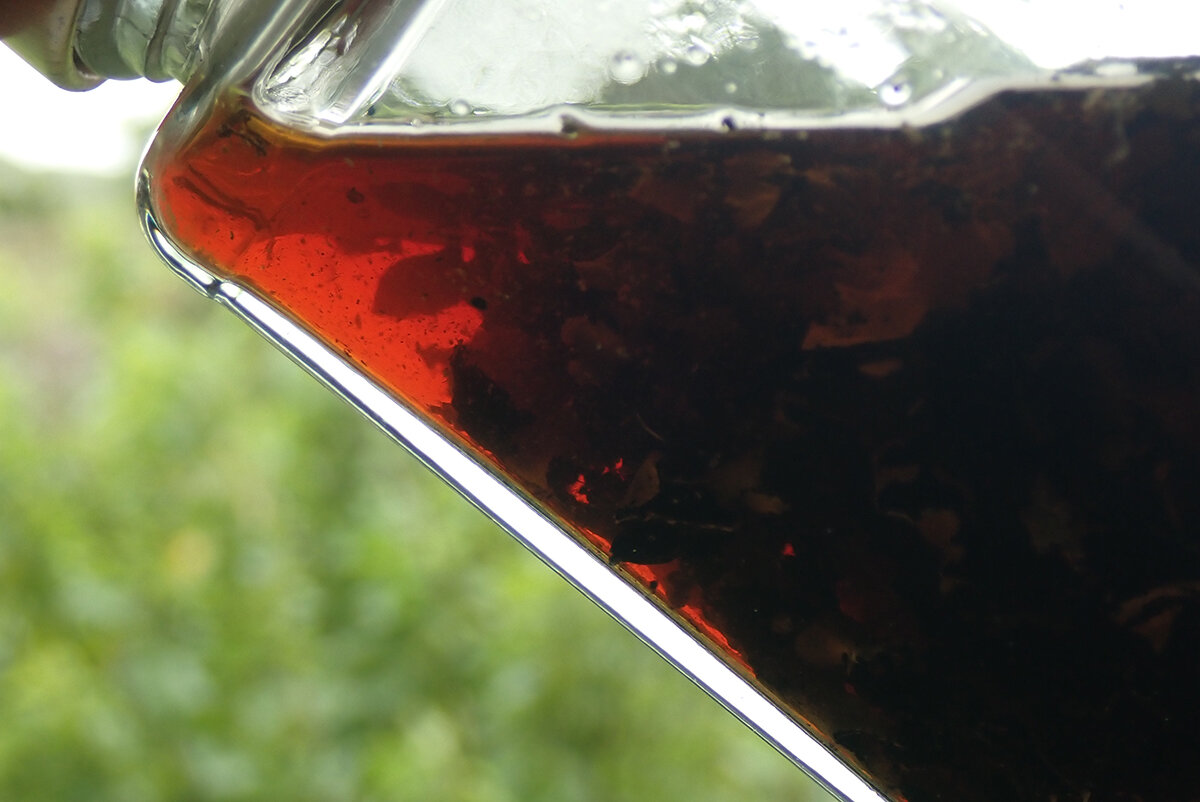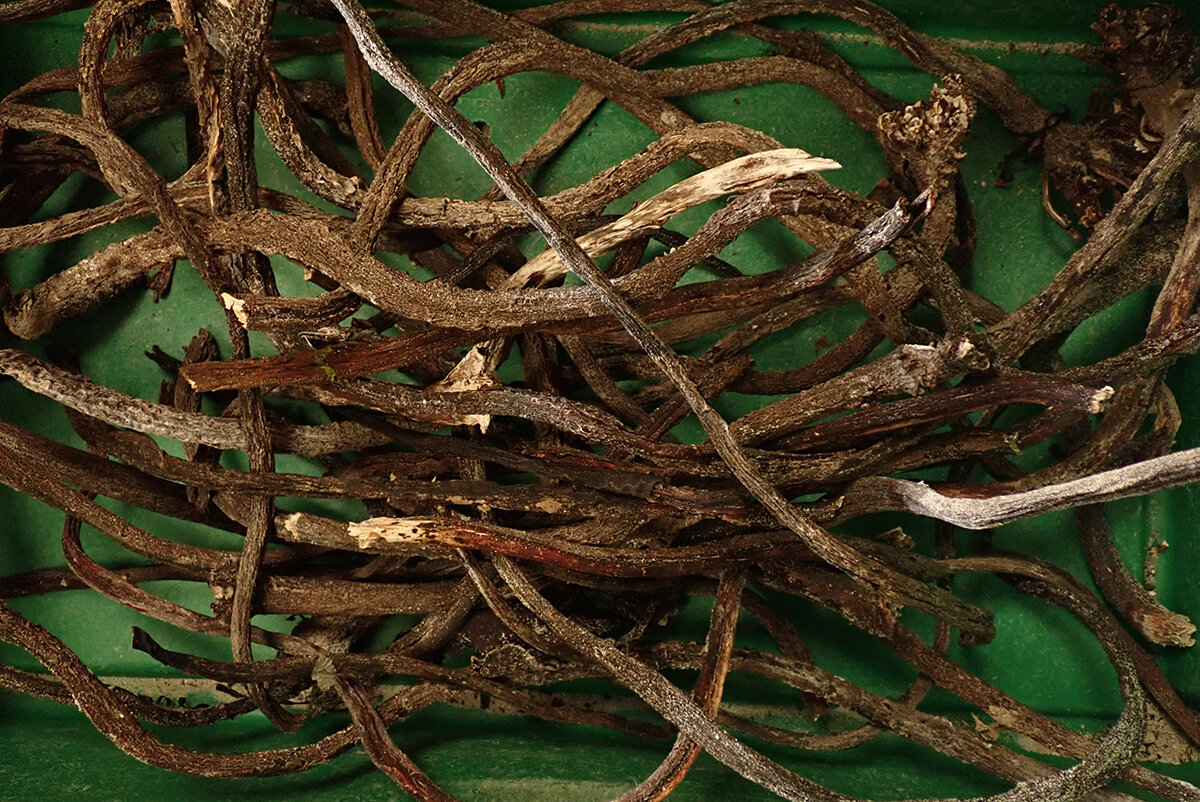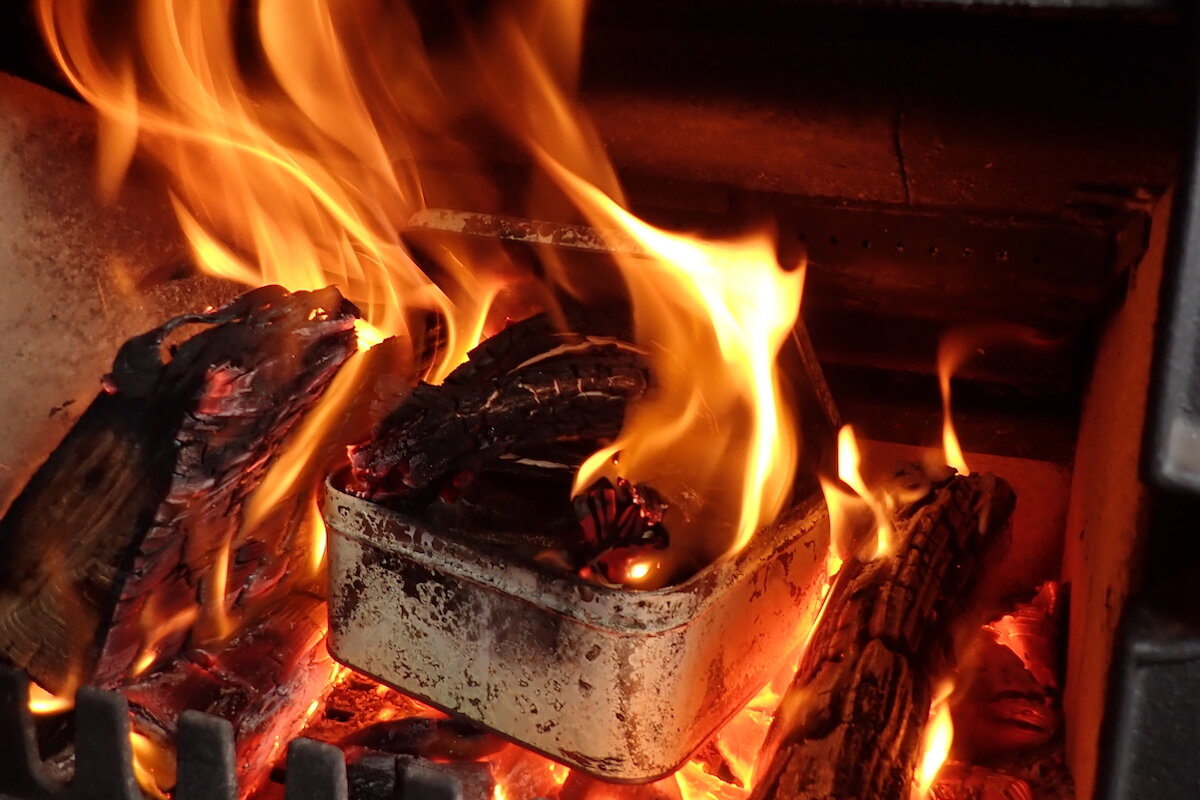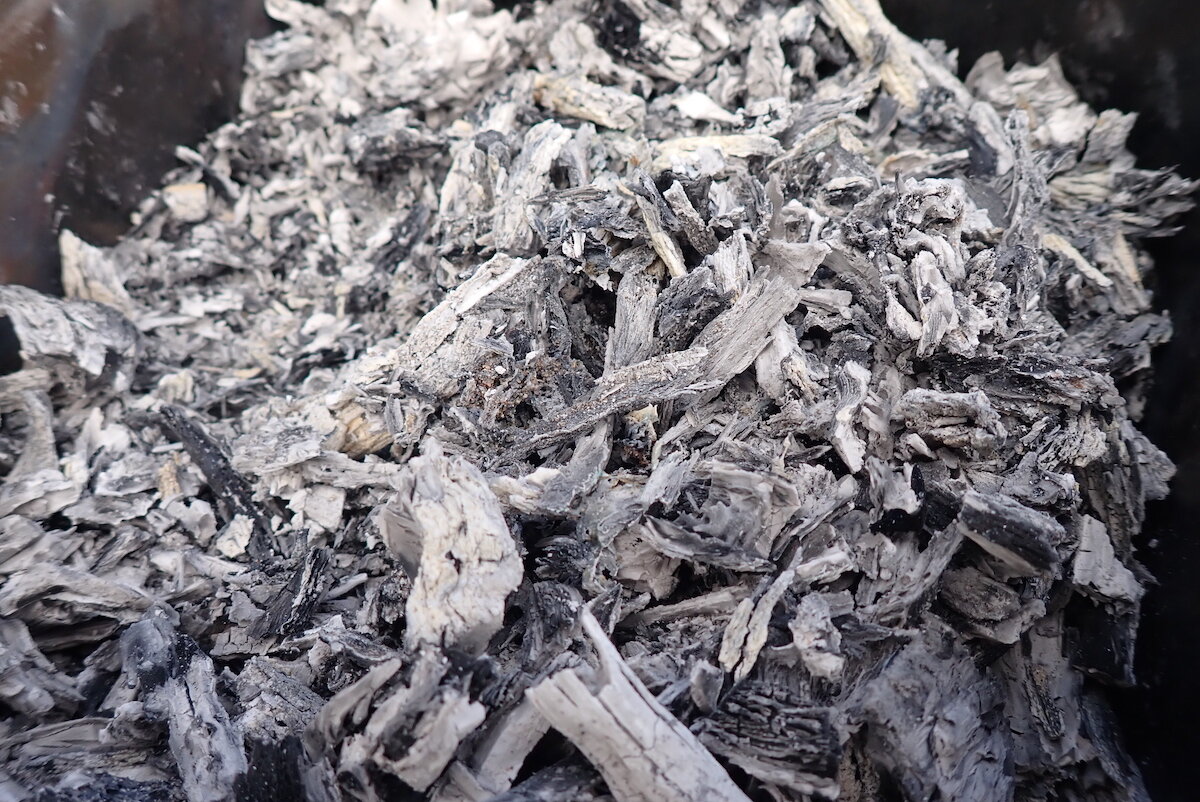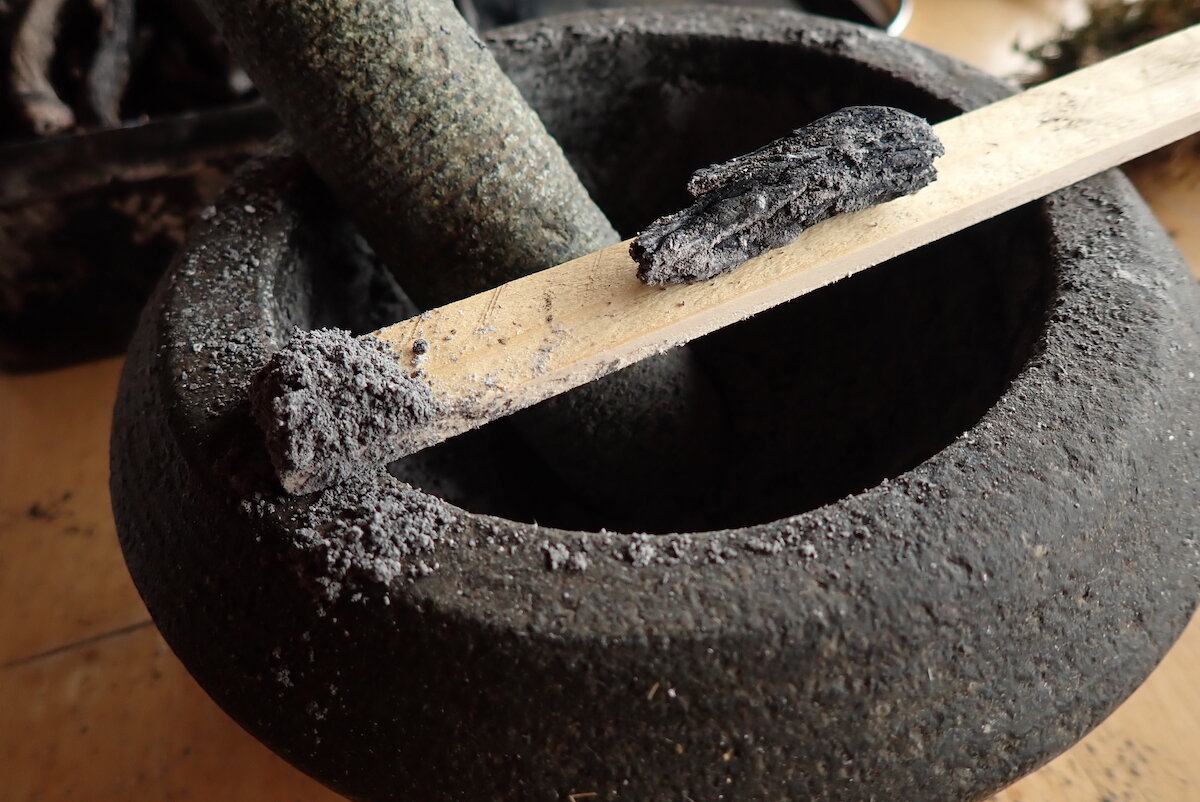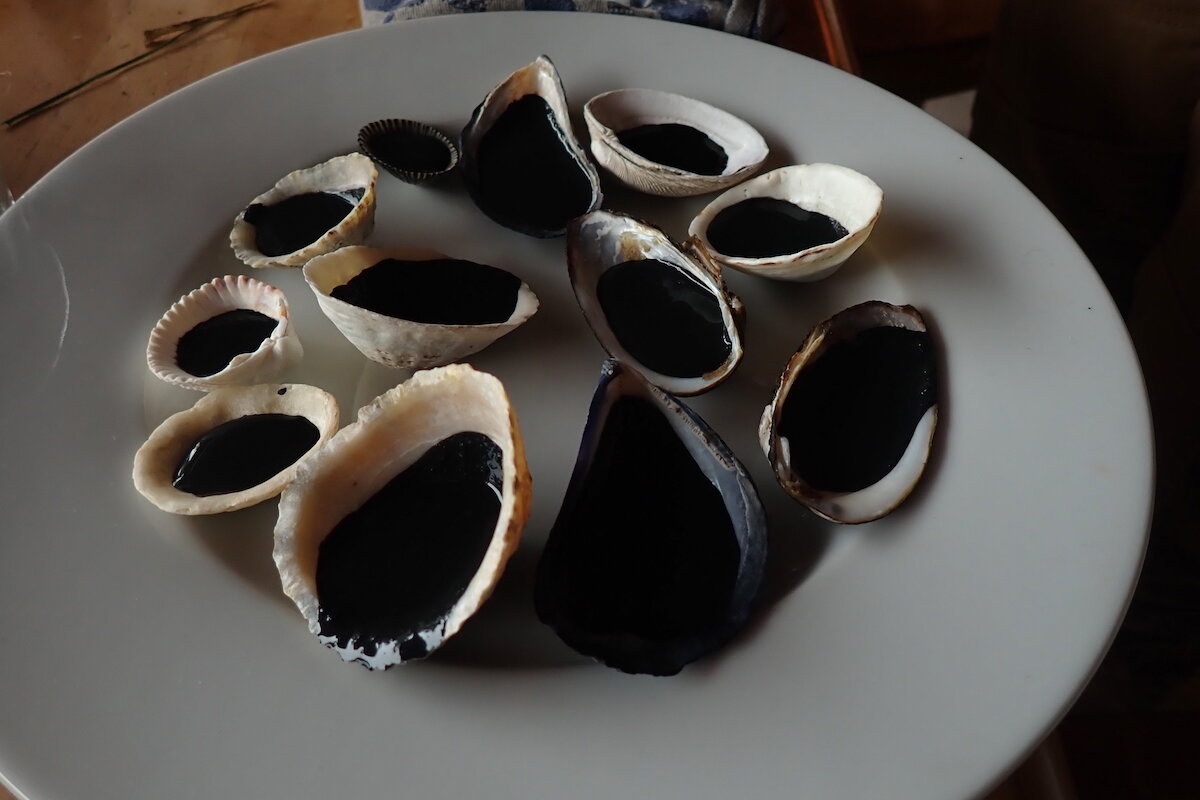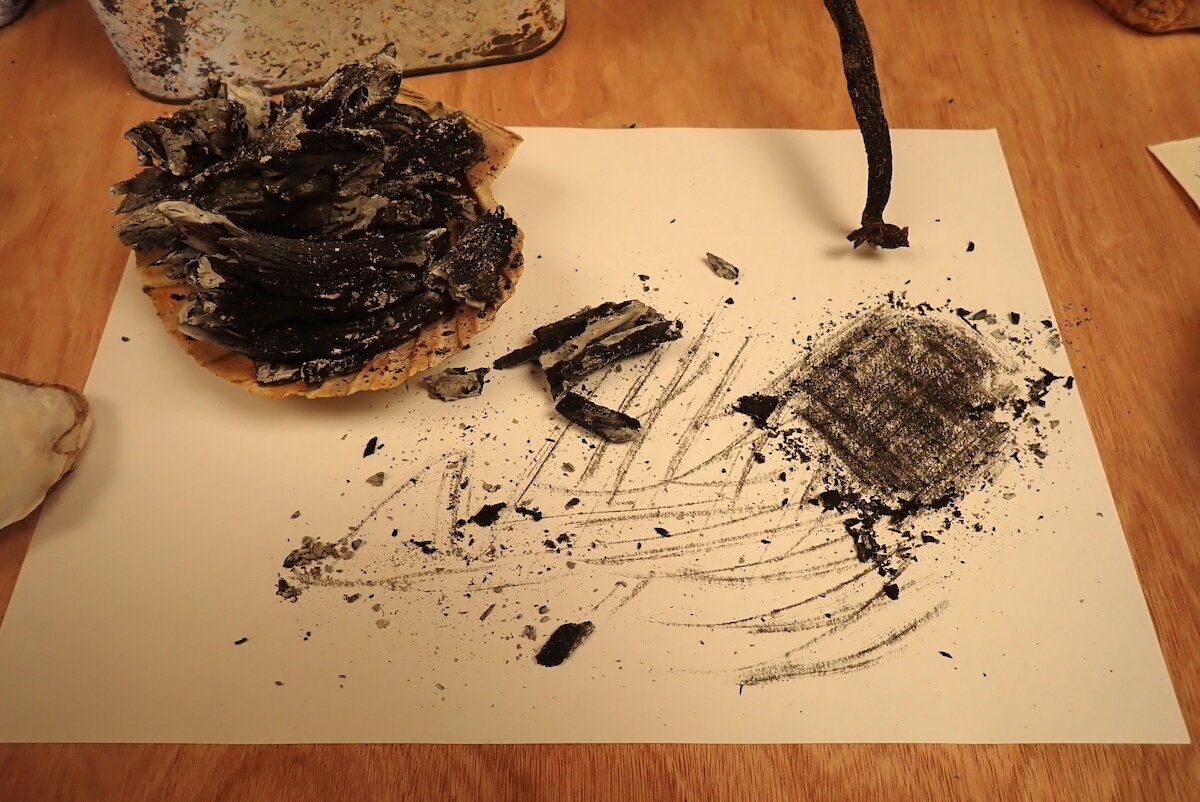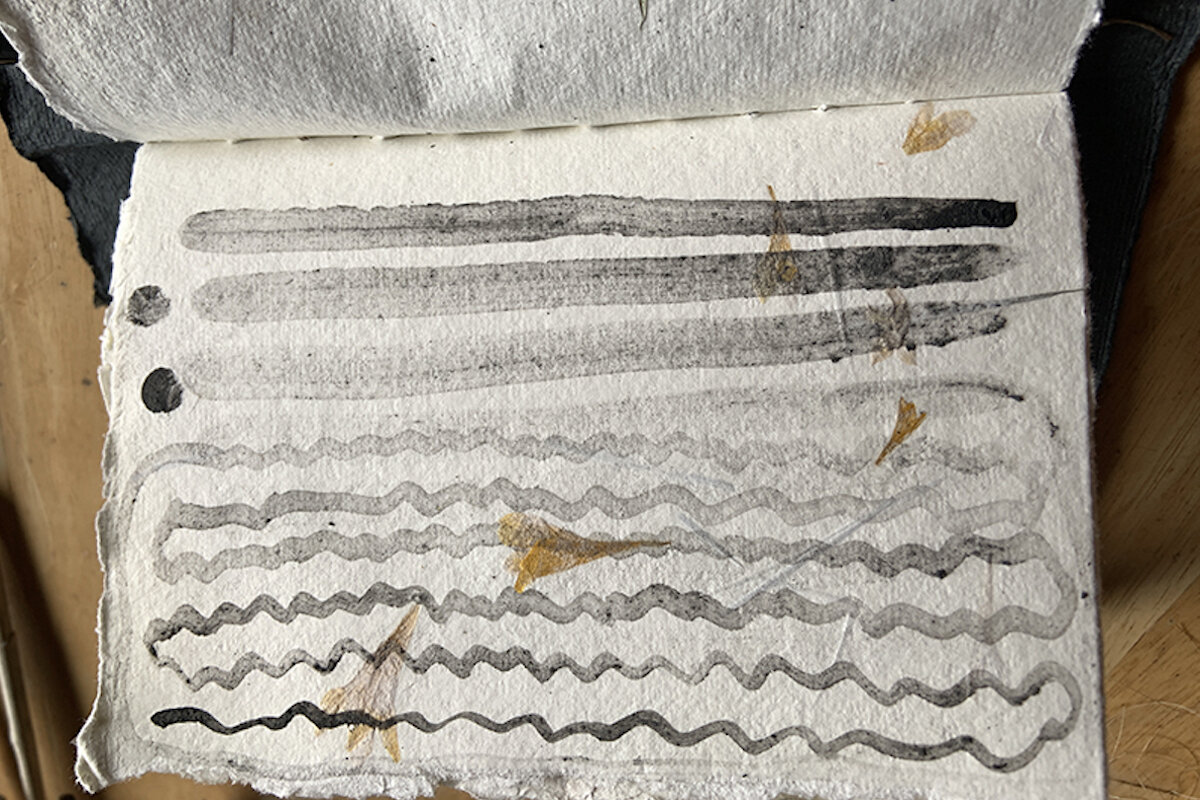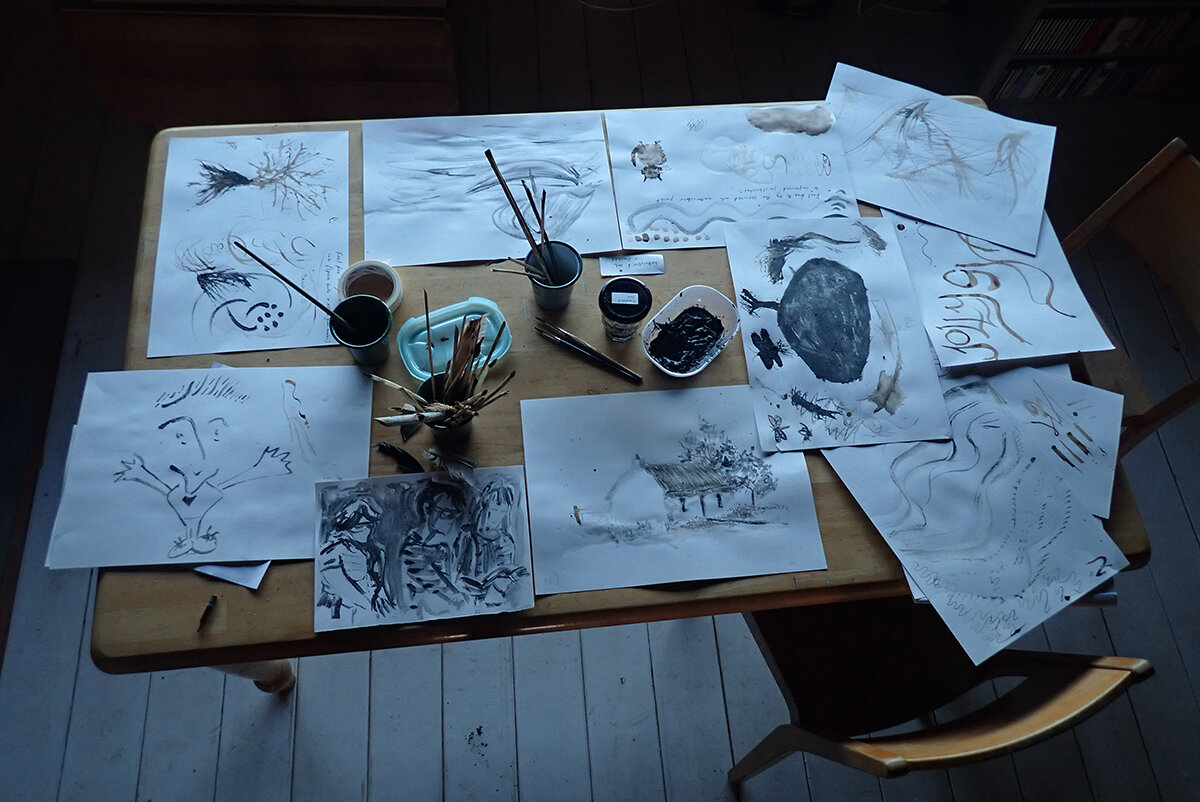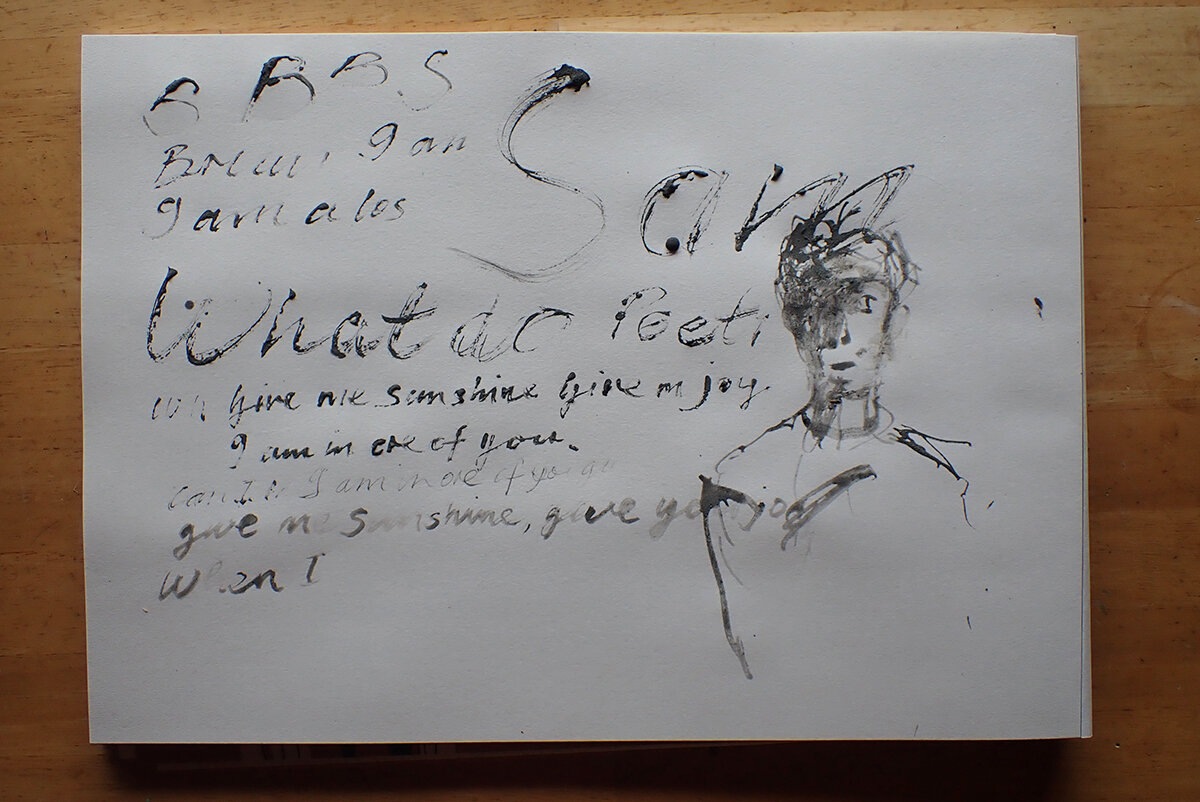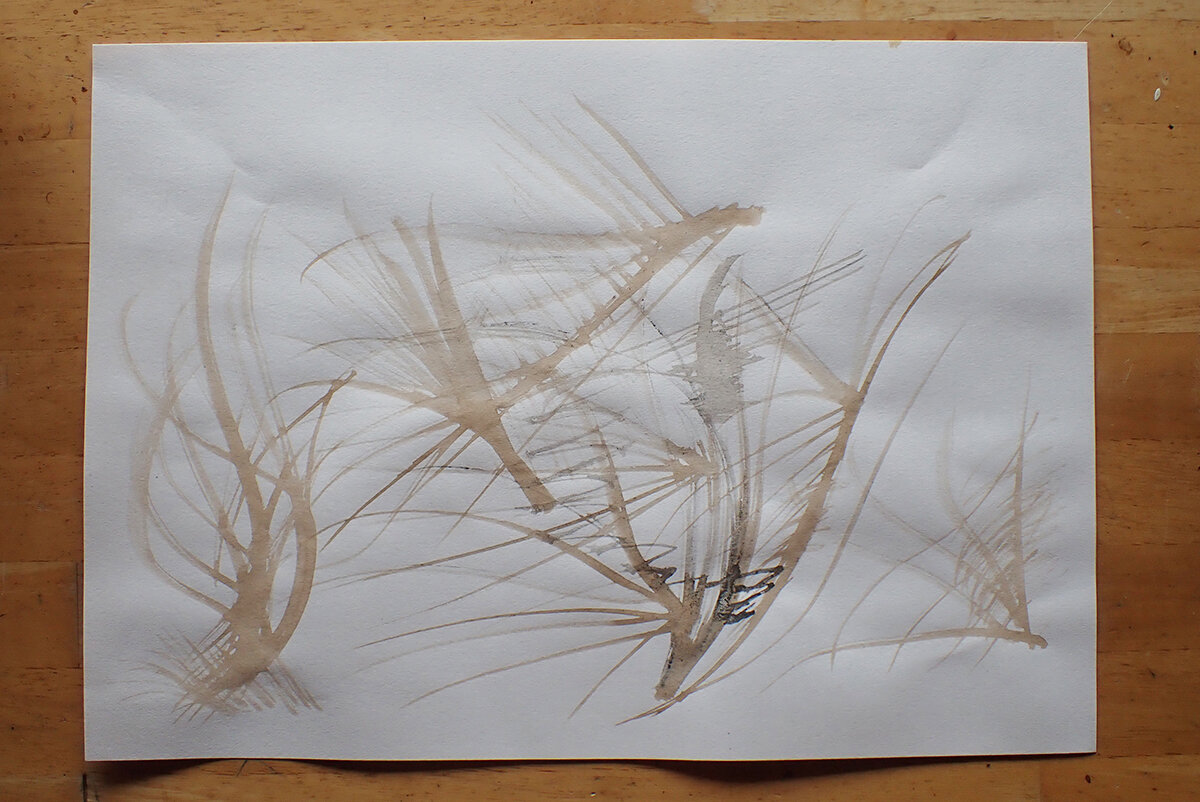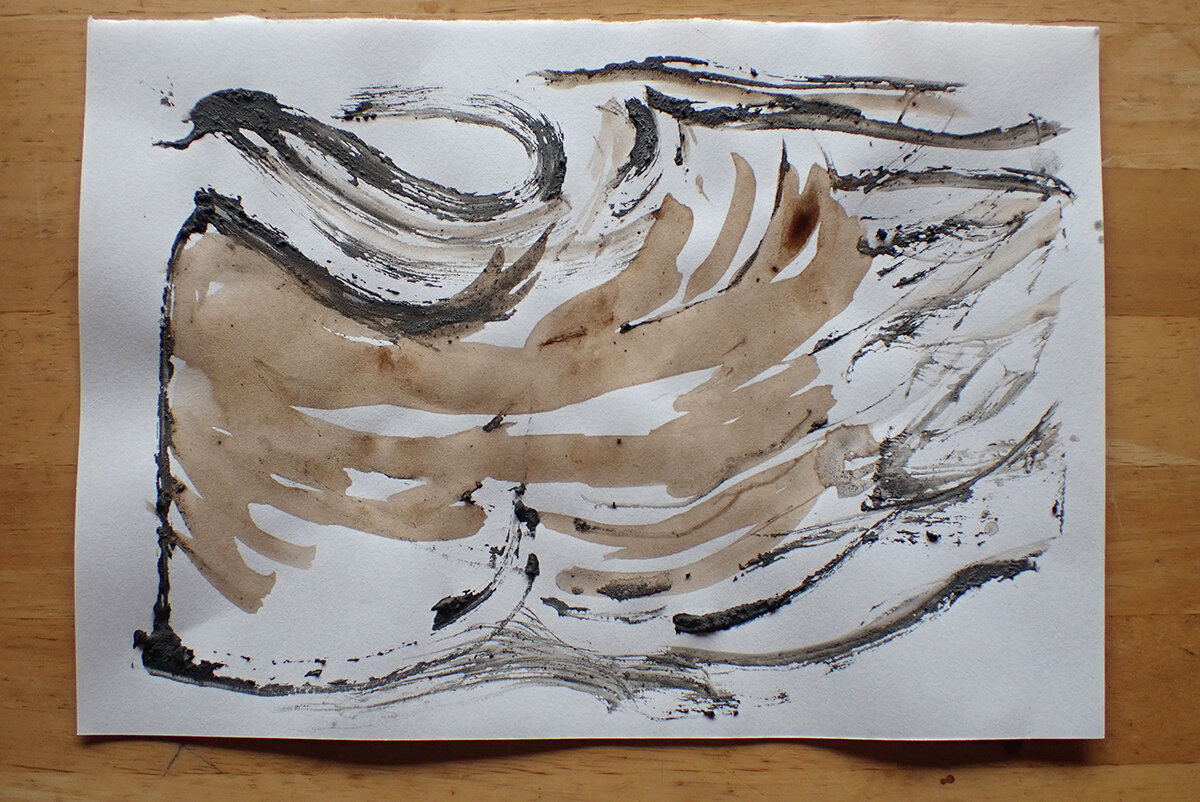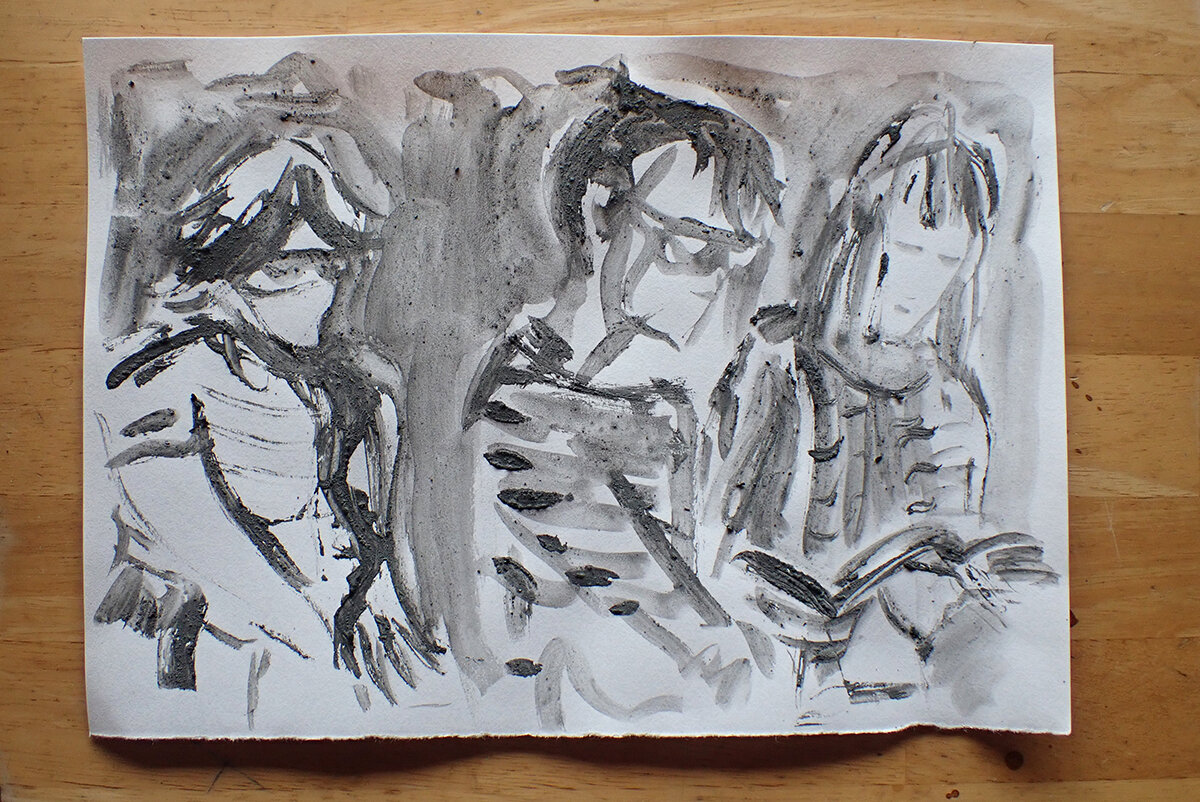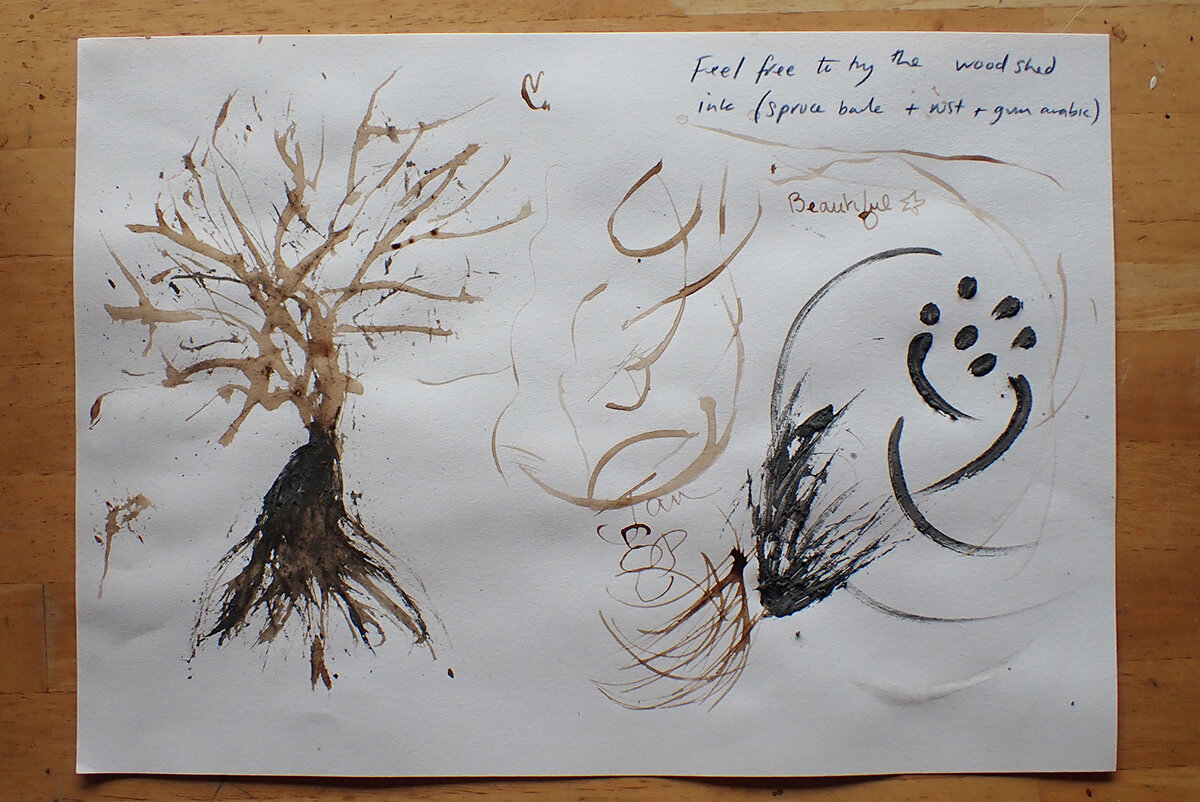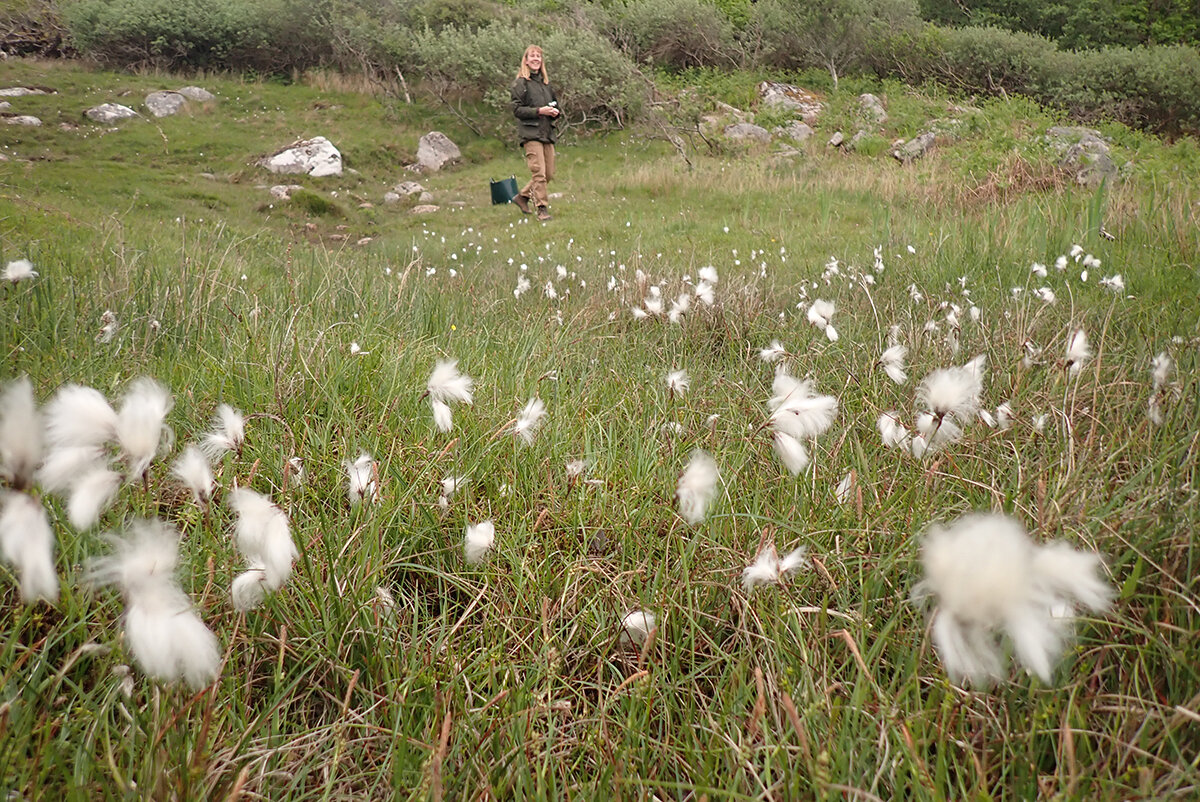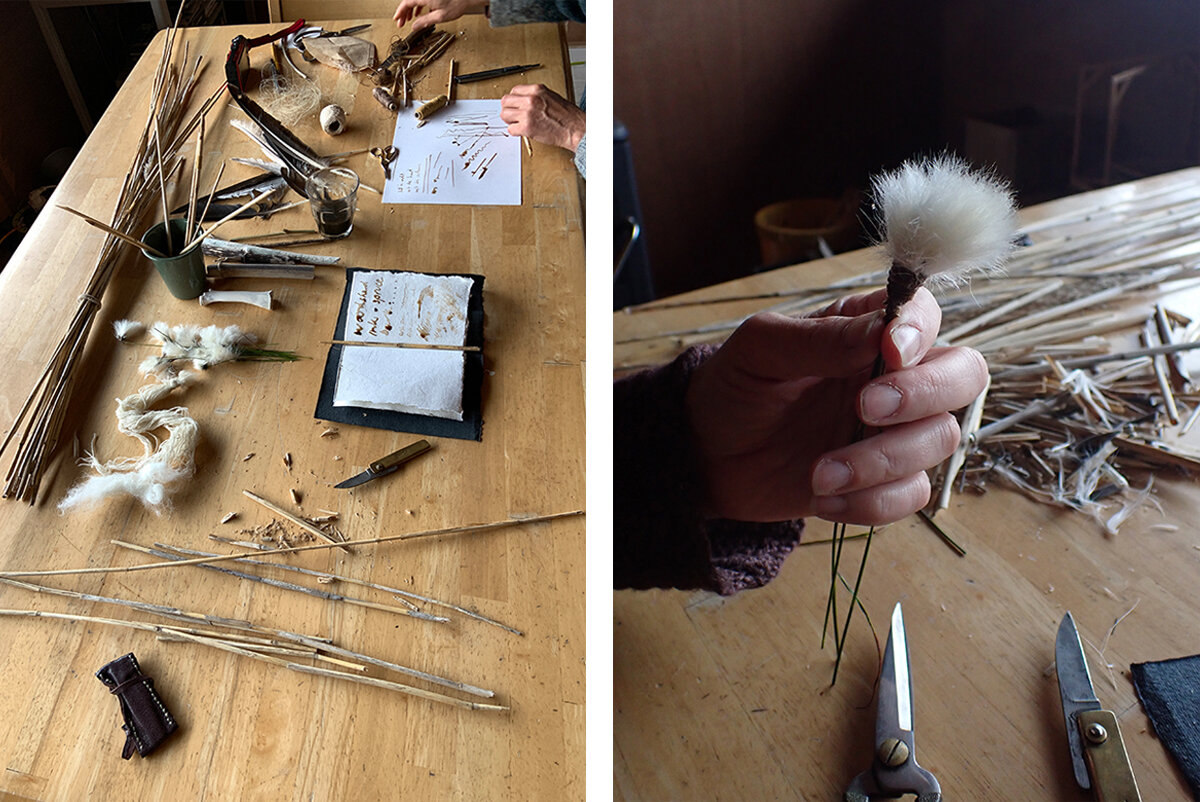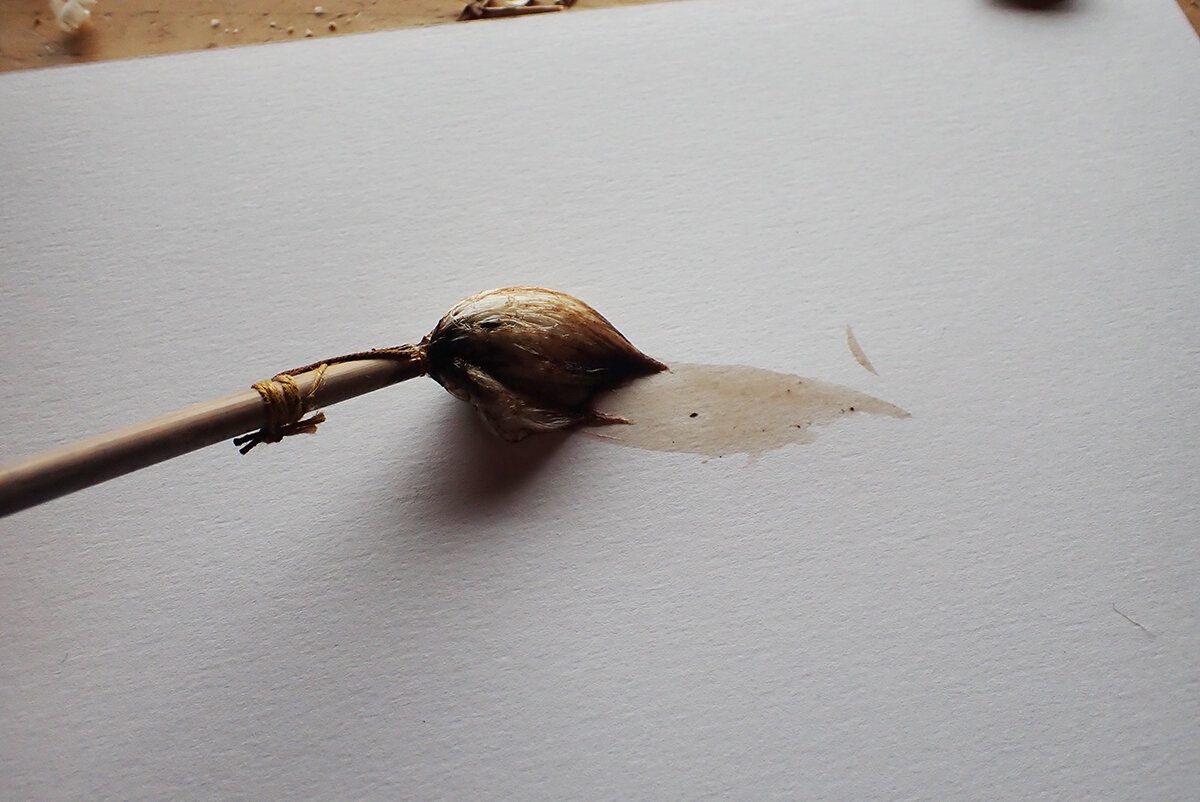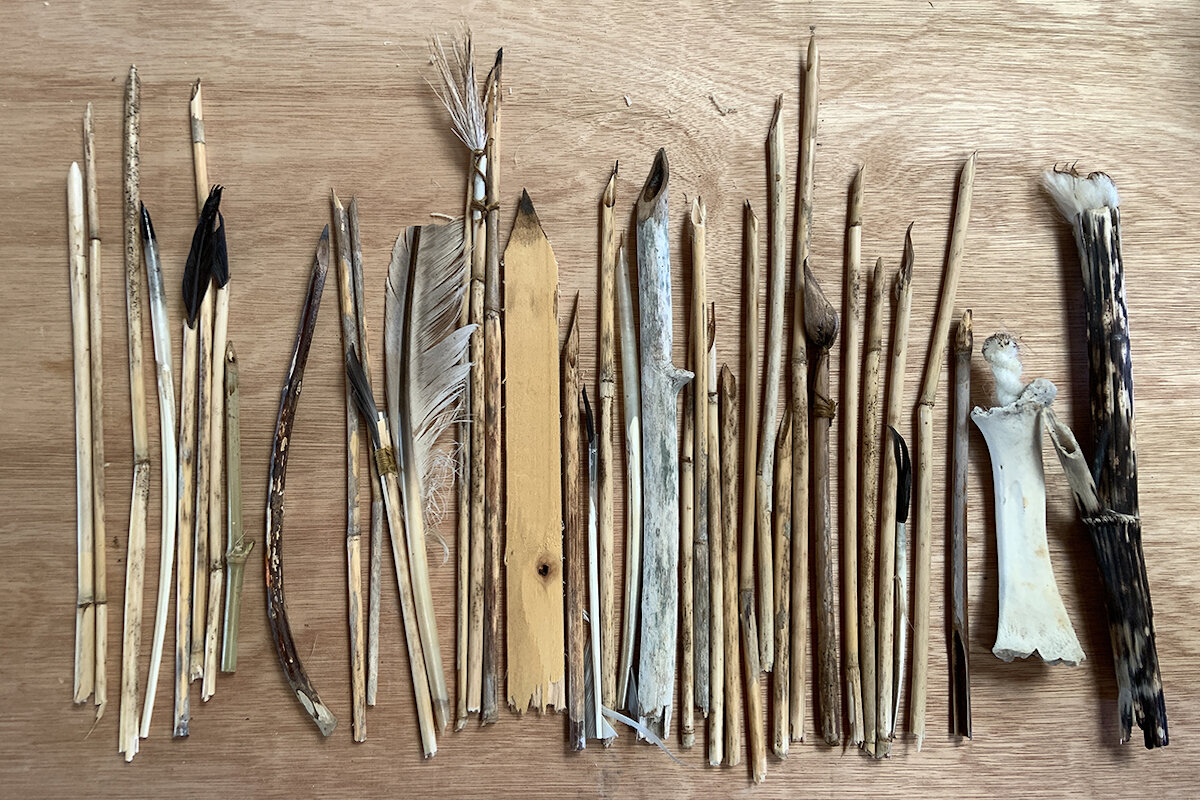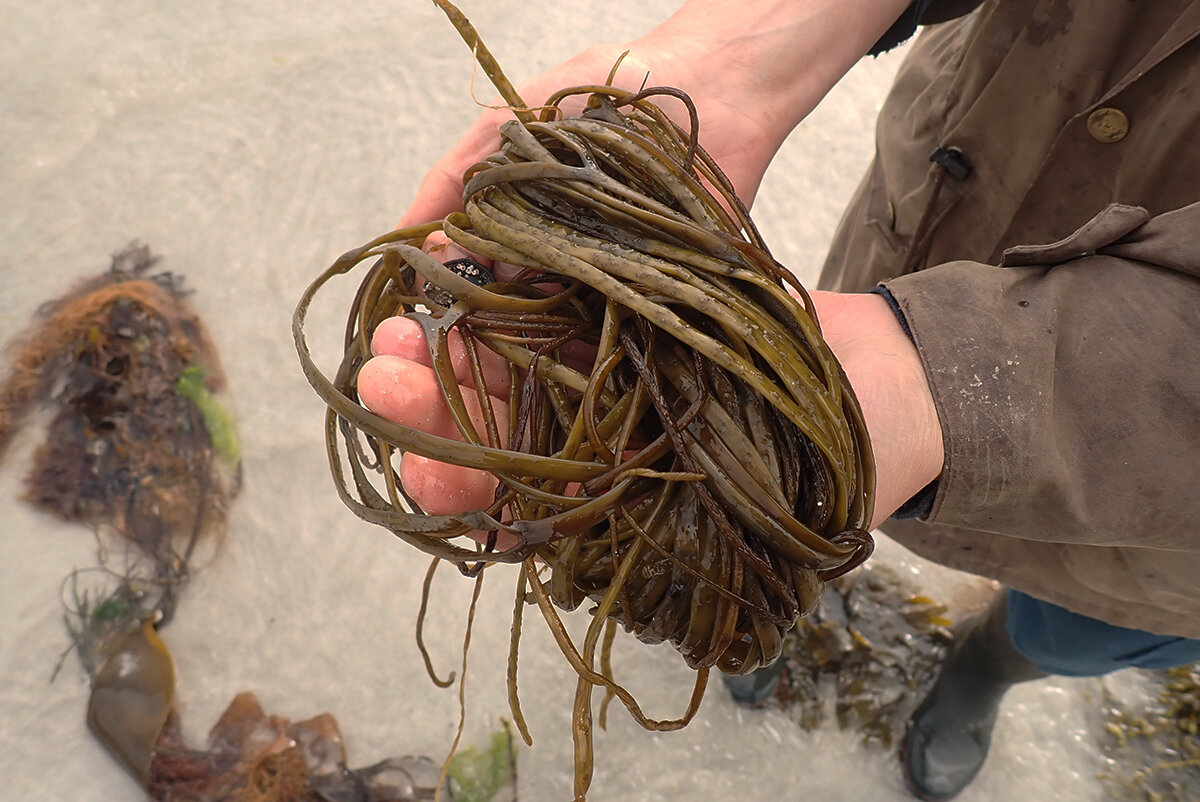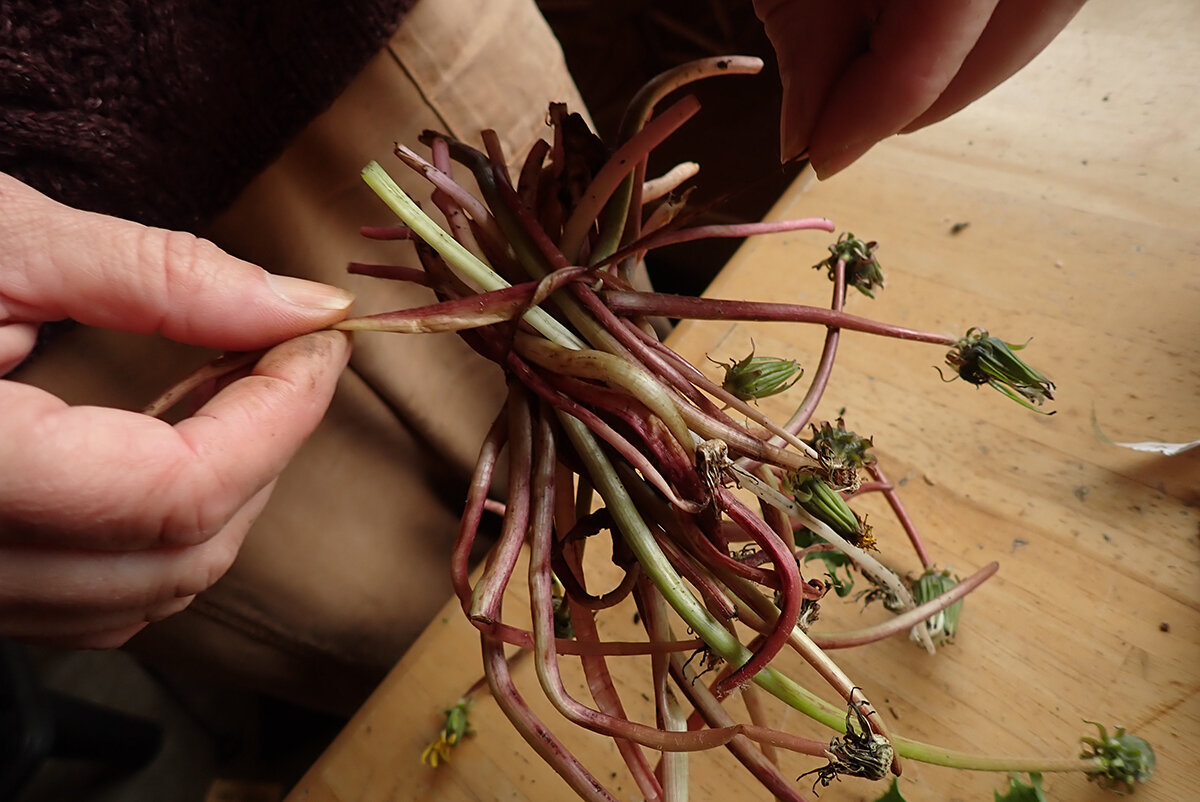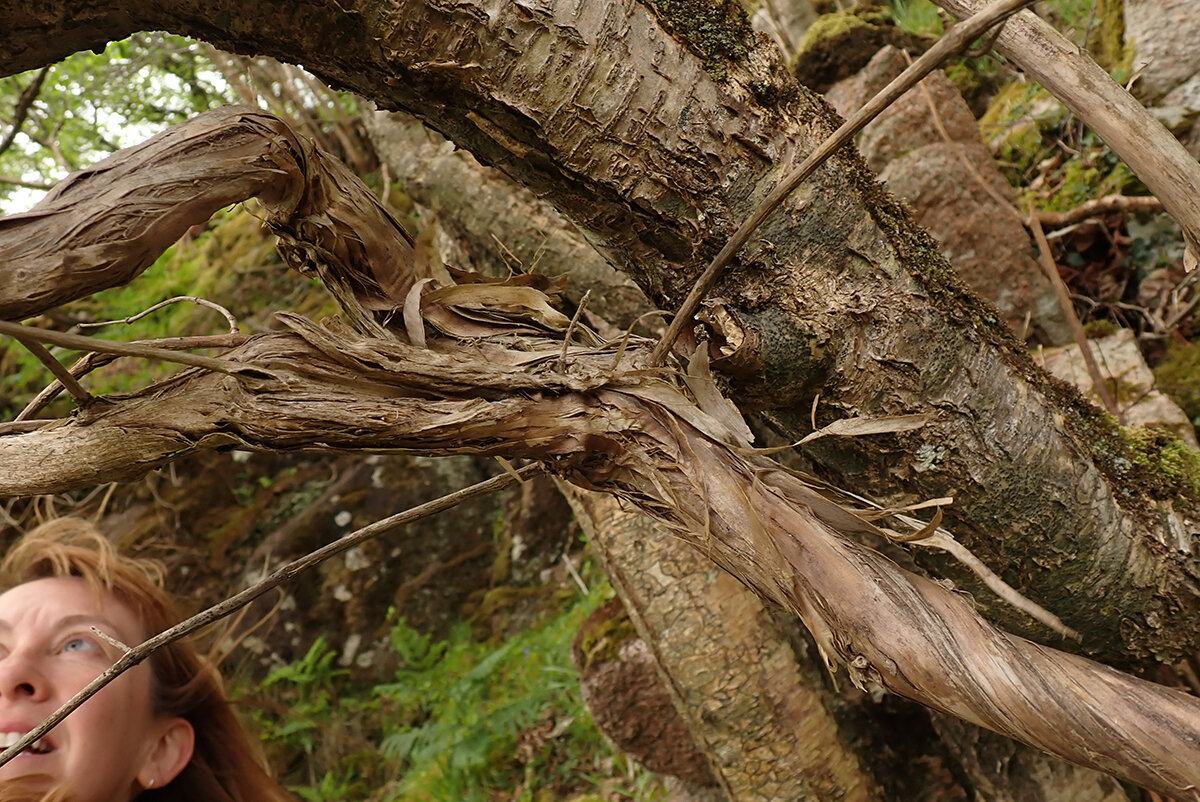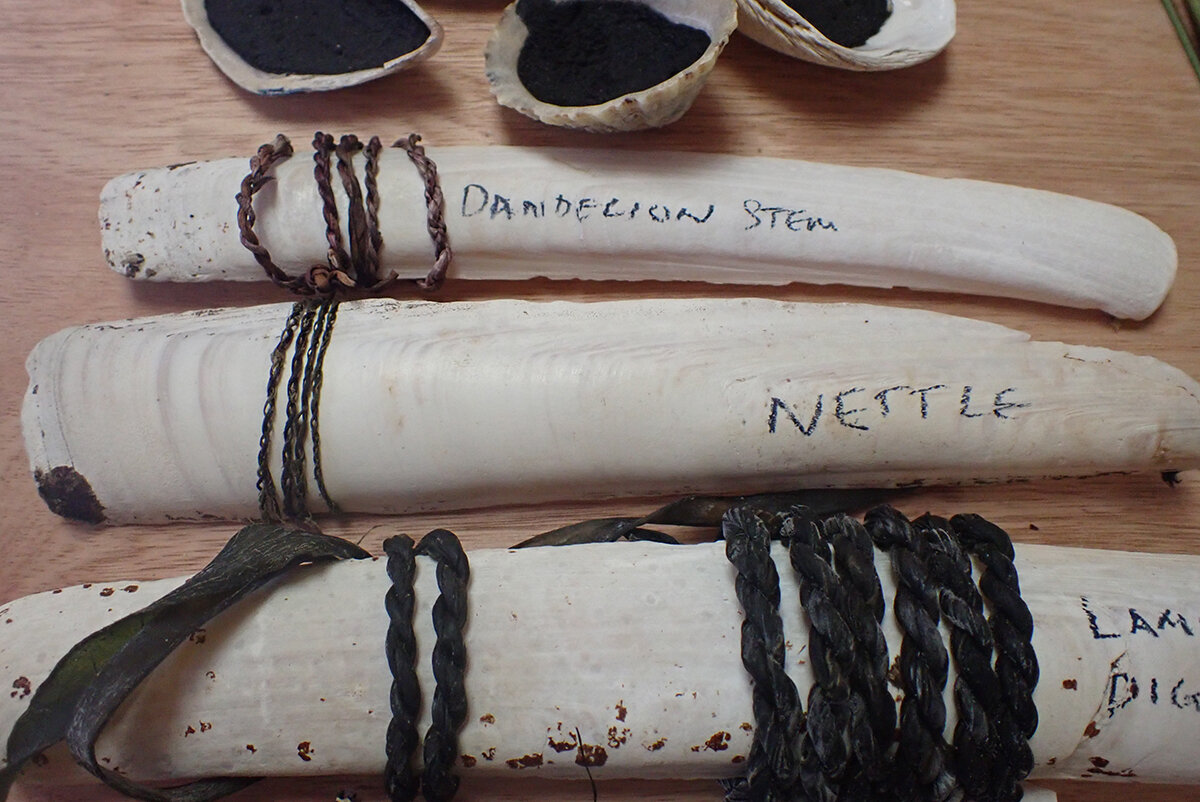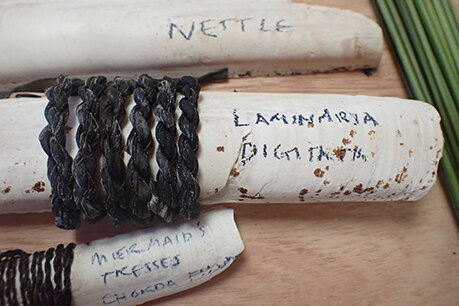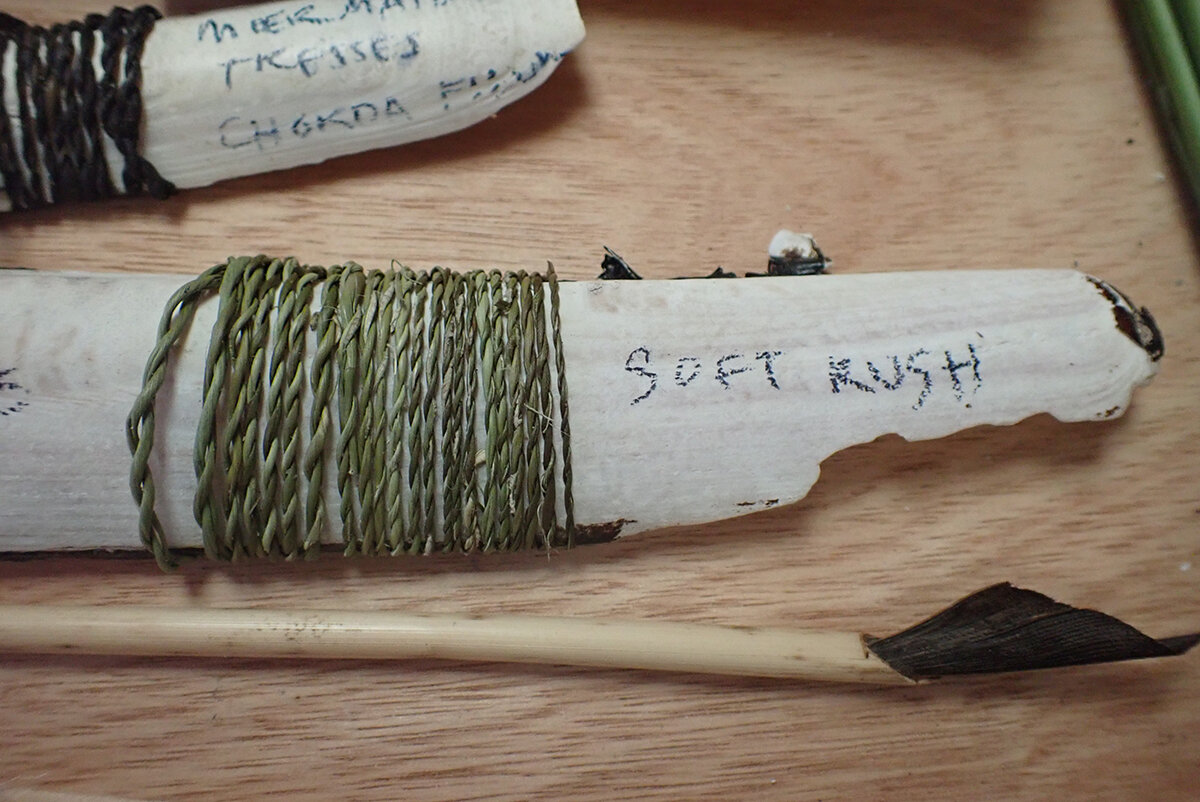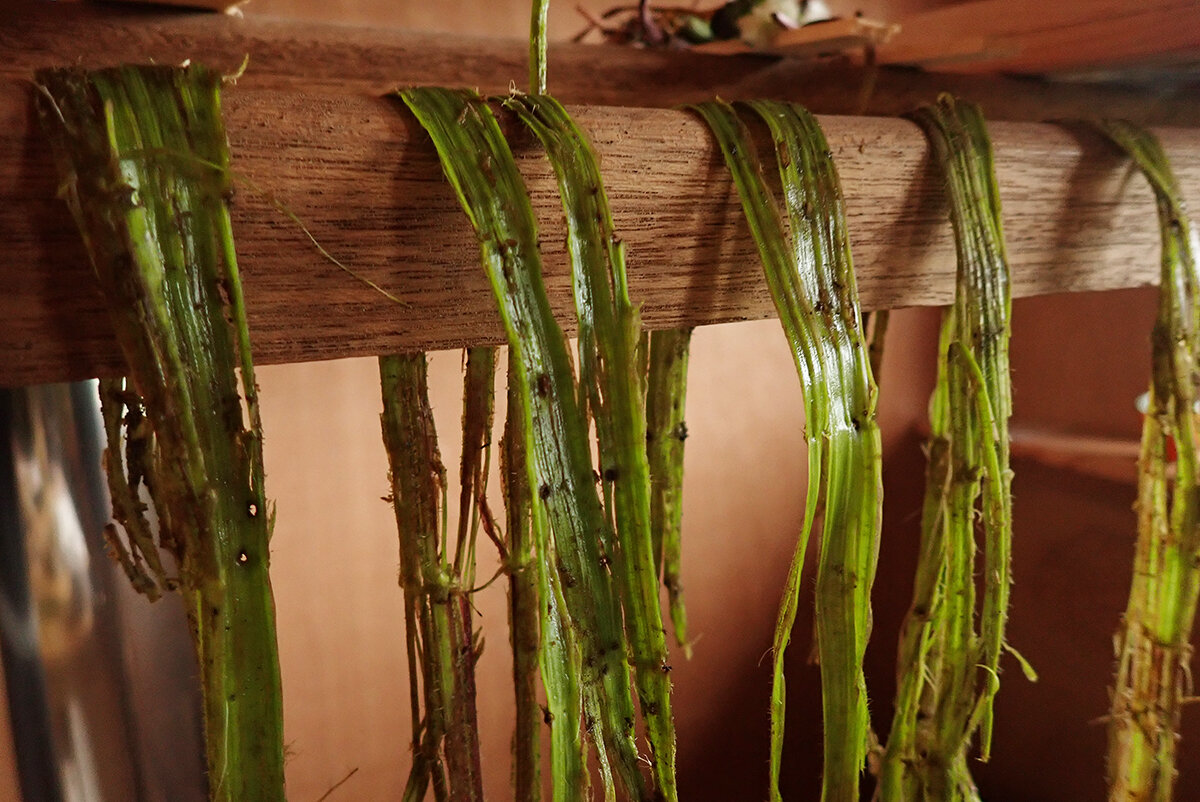Colours & Ashes
After Miek attended the grand Wild Twins masterclass by artist Caroline Ross and writer Paul Kingsnorth on Sherkin Island in Ireland we invited Caroline for a workshop concentrating on making organic art supplies. Caroline Ross makes art with archaic, local foraged and natural materials. Using what nature provides and repurposing what humans discard form a large part of her practice. She teaches workshops on drawing as well as on how to make all these wild-crafted things. Her drawings, paintings, illustrations and writings can be found in books, journals such as Dark Mountain, online periodicals as Wild Pigment Project and private collections.
The aim of the collaboration was originally to make ink from natural materials found very locally. This very quickly broadened to making as many local art materials as we could, having in mind a future collection of hyper-local, ethically & sustainably collected art materials to share with the local community, and to use to teach aspects of art, nature, ecology and history. Using wood ash lye, water, ammonia and heat extraction methods, we tested around 50 plants, lichens, seaweeds and barks, and over the first 4 days of observation, began to determine which ones showed promise for future longer extraction.
Kelp charcoal
Simultaneously we collected, cut and prepared long kelp stalks, which we packed in a tin and turned to charcoal over a hot fire. The resulting charcoal was fine, soft, beautiful soft deep grey. Ground and added to gun Arabic, local honey and water, we made watercolour paints and filled locally collected shells with it. Once dried, they were given away to attendees at the opening, and used by all at a table where we had laid out natural materials for use.
Botanical inks
We made ink from the spruce and larch bark remaining on the woodshed floor, boiled in rainwater, then darkened and modified with the addition of rusty iron from the garden. Ferro-tannic inks such as bark or oak gall ink are ancient staple of the British Isles, and are long-lasting, ecologically low impact, easy to make and cheap.
Some of the drawings with the warm brown bark ink and ash black kelp water colour made by various visitors during the Open Barn.
Stick pens, quills, twig, gnawed, tied bundle & ferrule brushes
We gathered reeds, feathers, sticks, bones, sheep’s wool from fences and fluffy vegetable matter from plant seed pods to make a collection of improvised brushes, quill pens, reed pens and experimental drawing tools. Visitors used these with the ink and paint to make many drawings on paper we provided. This included a baby who made her first ever drawing using only these natural materials.
Cordage
We created several different reverse wrap, plied and plaited cordages from various foraged seaweeds, found plant and animal fibres. Caroline twisted beautiful pink-green cord from the stems of dandelions. Smashed nettles were turned into fine rope next to soft rush blades and strips of honeysuckle bark. After one day drying in the wind the fronds of mermaid’s tresses -one of the long, rope like yellowish brown seaweeds - turned out to be perfect to braid as were the slender flat golden green straps of thongweed.
We’d read in historical accounts of certain kelps being used as strapping in place of rushes on chair seats. Experimenting with Laminara digitata, we found it to be strong, workable and smooth when worked at a certain level of humidity, backing up what we had read from anecdotal sources.
Paper
Miek used sea lettuce, bladderwrack and sugar kelp to make experimental papers, and although these were still drying by the time of the show, they showed promise both in texture and colour.
Future plans
The plant infusions are still steeping, and we will check the colours periodically and make dye vats of the most promising in future. These will then be made into either inks or lake pigments (solid pigments rather than transparent inks) using Caroline’s own locally collected chalk, from Wiltshire. A set of drawing and painting tools, paints, inks, paper and a basket to contain them all are one of our goals for this continuing project / residency. The hyper-local focus makes it a perfect vehicle for outreach education regarding sustainability, ecology, historical, social and geographical issues.
The next stage is to test dye strengths and collect materials for larger dye vats, with a view to another week or two’s work in Spring 2022.


